
Founded as a Saxon burh to defend the crossing of the River Severn at this point, Shrewsbury replaced the Roman settlement at Viriconium as the major population centre in the area. Known as Scrobbesbyrig, which mutated to Sciropesberie by the time of the Norman invasion, the town was also the location of a Saxon mint in the kingdom of Mercia, and as such was required to be fortified. By Saxon law, all coins were withdrawn from circulation after five years and replaced, so a lot of mints were required to facilitate this. Shrewsbury's importance grew, until it became the county town of Shropshire. The Saxon shire system was important to the social ordering of Saxon society, with courts located in county towns that levelled the appropriate level of taxation. Saxon society was so much more advanced than we often believe, or give it credit for being. There are stories from the reign of Ethelred (the Unready - you know him, right?) where the shires managed to raise £48,000 to pay off the marauding Danes (a specific tax called the Danegeld) in a very short space of time. For "dark age" society, England was very sophisticated!
But I digress.
Shrewsbury is thought to have been the site of the capital of the Kingdom of Powys, Pengwern, until 778, when it was finally wrested back into English hands, forming part of the Kingdom of Mercia. By the late eighth century, a monastery was built here to St Chad, part of which still remains in the centre of the town.
Old St Chad's is actually the Lady Chapel of the former monastic church. A Lady Chapel is part of a church that is dedicated to St Mary the Virgin, not a chapel for ladies to use! Churches of the middle ages had many side-chapels, usually in the transepts, and the lady chapel was most often off the south transept, or else an extension of the presbytery (east end). Old St Chad's looks a little forlorn today, a small stone box ringed by houses. The church collapsed "sensationally" in 1788, and a new St Chad's was built not too far away in 1792.
Shrewsbury was, as I say, the centre of population for this area, and post-Conquest, it remained so. Shrewsbury was also the prize awarded to Roger de Montgomerie, one of William the Conqueror's most trusted advisers. I've mentioned him a lot recently, so I think it's about time I told you his story. He was related to William through a convoluted line of the Dukes of Normandy, and he was the man who remained in Normandy while William came across the channel to claim the throne (though he did send 60 ships to help). He was, as I've said, one of his most trusted advisers, and in 1071 was created one of the three Marcher Lords along with Hugh d'Avranches at Chester, and William fitzOsbern at Hereford. Roger's holdings were massive, and put him as one of the top five landowners in the country following the post-Conquest carve-up of the kingdom. The purpose of the Marcher Lordships has often been said to have been to continue the Conquest in parts of the country that still held pockets of sedition, and Earl Roger was exceptionally vigorous in doing this.
Earl Roger was a staunch supporter of William, but when the king died in 1087 and was succeeded by his son William Rufus, Roger joined a baronial rebellion against the new king. The younger William convinced Roger to switch sides shortly before the other rebels were defeated, so while they all forfeited their lands, Roger remained as Earl of Shrewsbury. He was succeeded by his son Hugh, who died while on campaign with Hugh d'Avranches in Wales, and the Earldom passed to his elder brother Robert, who had succeeded their father to his vast estates in Normandy. By acquiring the family holdings on both sides of the channel, Robert became one of the wealthiest people in Anglo-Norman England. Robert was perhaps most notorious for being close friends with William's eldest son, also a Robert who had succeeded to the Duchy of Normandy upon his father's death, and supported him in his grab for the English throne in 1106. Robert the earl had been fortifying castles across his estates against William II's successor, Robert the duke's younger brother Henry I, and for this he forfeited his earldom in 1102. When Robert the duke's rebellion failed against Henry, Robert the earl was captured and spent the rest of his life as Henry's prisoner. The earldom was held by the crown in forfeit until the fifteenth century, when it was passed to the Talbot family (hence a lot of pub names throughout the county). I do hope you managed to keep up through all that!
Anyway, enough of my fascination with Anglo-Norman England! Roger de Montgomerie, aside from giving his name to the neighbouring county of Montgomery, founded Shrewsbury Castle in 1074, and Shrewsbury Abbey in 1083, where he was buried. This magnificent effigy was sculpted a hundred years after his death in 1094, when it was decided that something needed to be done to celebrate the founder of the abbey, but the result incorporates some anachronous elements in armour etc. Still, it is impressive!

^ actually getting to see one of the great celebrities of the Anglo-Norman age was, undeniably, quite a thrill!
Domesday Book has one of those wonderful opening introductions to the county that mentions all of the local customs of the town, which include such things as a woman having to pay 10 shillings to the king if she wanted to marry a man (this increased to 20 shillings if she was a widow); if a man's house burnt down he had to pay 40s in fine to the king, plus 2s to the nearest two neighbours; if a townsman died who worked for the king in demense, the king had 10s "in relief". Demense, incidentally, is the system whereby a townsman would work the land of his lord, all produce of that land being given to the lord. The Book also records that there were three moneyers in the town (the name by which the men who operated the mints were known). Shrewsbury would, annually, give £30 a year in tax, with the king receiving two-thirds (the third would go to the sheriff), but in 1085 Earl Roger received £40, showing just how the Normans changed the country.
Pre-Conquest, there were 252 houses in Shrewsbury, and the city paid tax (geld) for 100 hides of land. In addition, the 252 townsmen paid an annual rent of £7.16s8d. The hide was the unit of workable land upon which a tax, called geld, was set. It is this system that allowed Saxon England to be taxed so effectively - the courts in the county towns knew exactly how many hides of land were within the shire, so the shire paid its tax to the earl, who paid it to the king. It seems quite simple today, but at the time it made England the envy of Europe, and explains why it was the target of so many raids from the Vikings and, ultimately, why the Normans prized it so much.

Shrewsbury Castle was built in 1074 as a typical motte-and-bailey construction. Domesday Book tells us that it occupied the site of 51 messuages (that is, a house and its associated holdings within a borough). Not a lot remains of the original castle, save for the motte and bailey layout - the castle was greatly remodelled in the late eighteenth century by Thomas Telford, who was then the county architect, and who built the private mansion house in the bailey and added the wonderful yet entirely inappropriate crenellations.
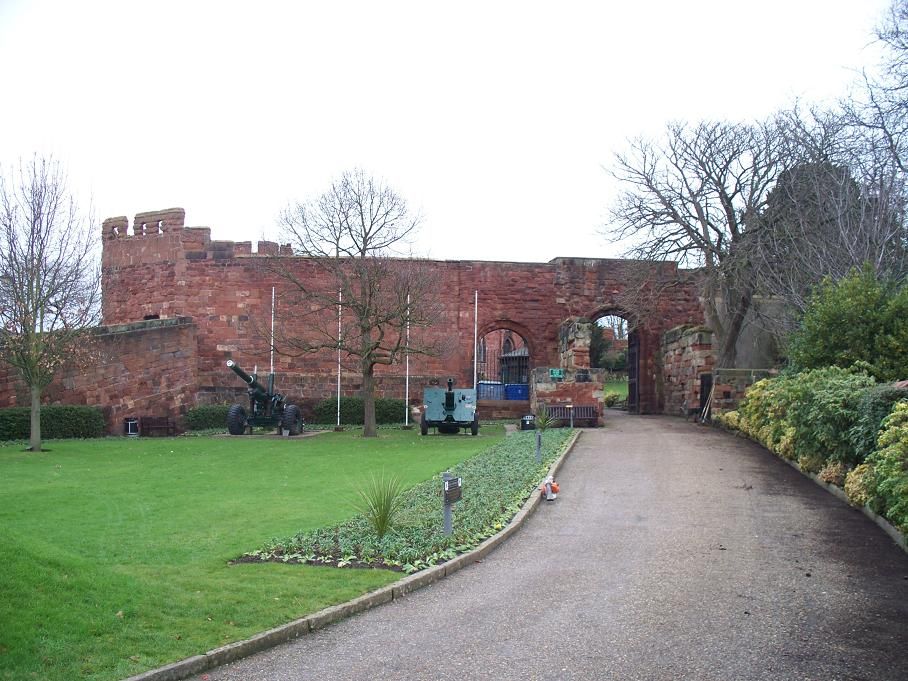 ^ the gateway is one of the few surviving Norman parts of the castle.
^ the gateway is one of the few surviving Norman parts of the castle.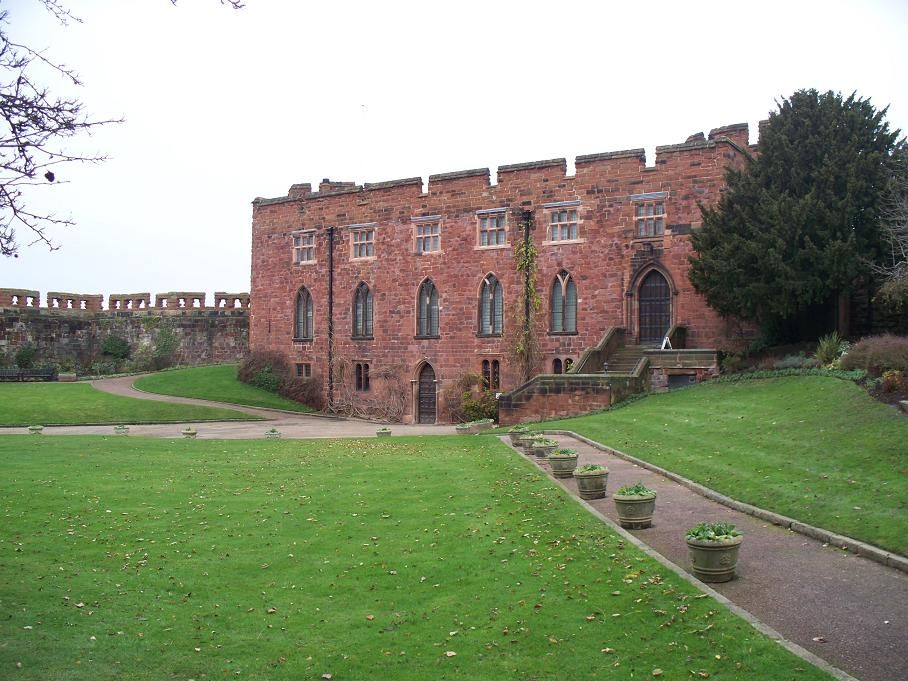
The motte is now crowned with a summer house that was part of the mansion redesign, called Laura's Tower:
This is all anachronistic, of course, but is a clear demonstration of the neo-gothic style that was beginning to sweep the country by the time of the Victorian era. The motte is still impressive, at any rate:
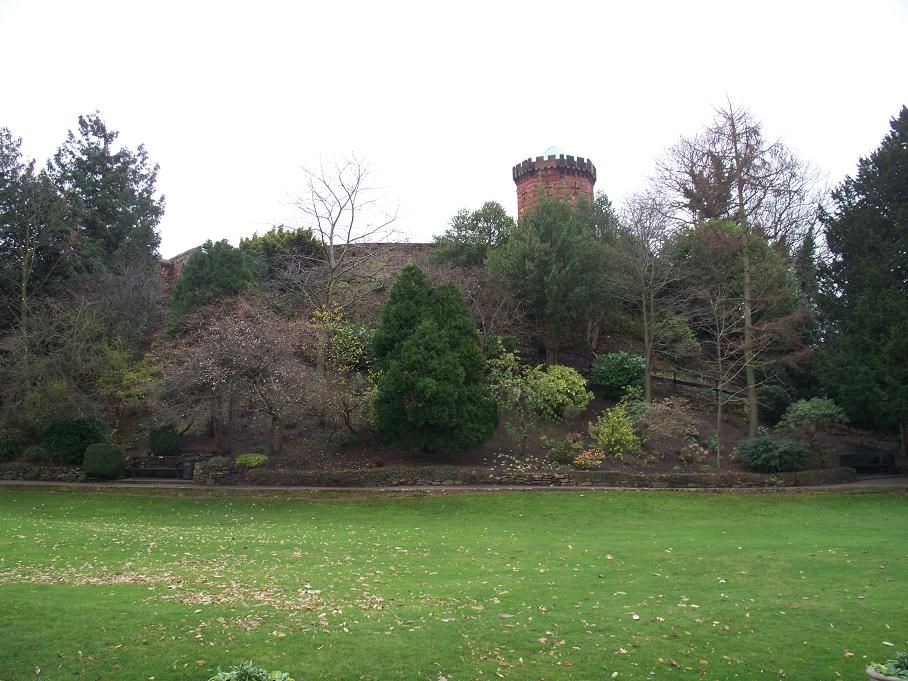
The castle was partly demolished and refortified by Edward I following his Conquest of Wales, but it wasn't really used as a castle until the Civil War. As with much of Wales and the Marches, Shrewsbury declared for the King, but the castle was captured by Parliament in 1645 and was held as a garrison until the Restoration in 1660. It was thereafter granted to Sir Francis Newport until given to the town in the 1920s. The mansion now holds a regimental museum, which was closed on the day I visited! Ah well. The motte affords wonderful views across the area, at least.
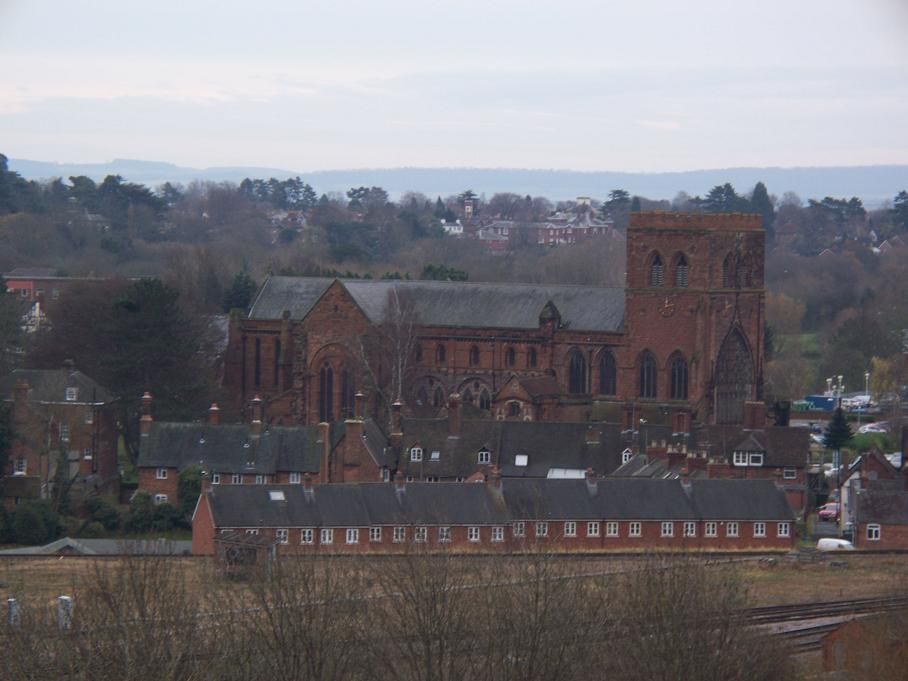
The other foundation here to stem from Earl Roger is the Abbey, which was begun in 1083, the story being that Roger placed his gloves on the altar of a Saxon church already standing here, and vowed he would make an abbey. Domesday book records that the abbey is still under construction, and that Earl Roger granted it 39 messuages to get it started.

A Benedictine Abbey was thus begun, with monks from the Abbey of Sées in Normandy being brought in to assist. By 1087 the business of religion began. Earl Roger further endowed the abbey with the minster church of Morville, near Bridgnorth, before he died at the abbey in 1094.
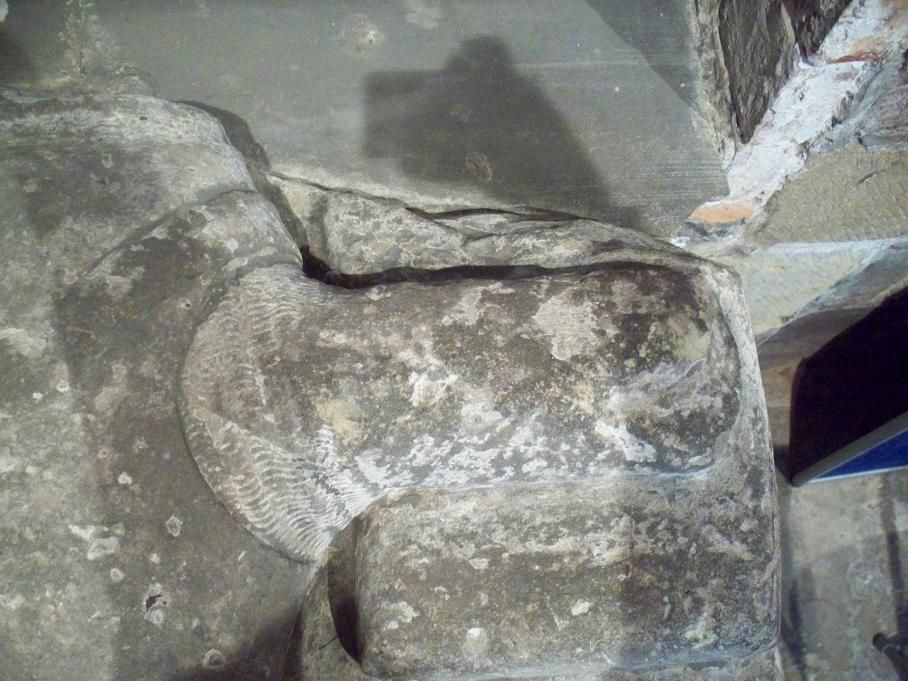
^ I'm sure he didn't look like this in life...
The abbey was initially a huge construction, its position on the main road to London helping to finance this. In the twelfth century, when abbeys all over the country were collecting relics of saints like there was no tomorrow, Shrewsbury Abbey came across the bones of St Winefride, and interred them in a shrine here around 1137. It is said that Henry V walked from Shrewsbury to Holywell after praying at this shrine in 1416, after his victory at Agincourt. Henry V had already been to the abbey at least once before, where he recovered from a wound he received at the Battle of Shrewsbury in 1403 (an arrow found its way into his cheek...nasty...see more below!)

The shrine made the abbey a place of pilgrimage for many, further increasing the reputation of the monastery. However, it was destroyed during the dissolution, when the Abbey was suppressed in 1540. Its income was put around £600 a year, which the guidebook states ranked it 34th wealthiest monastery in the country (out of 602, apparently). The Abbot, Prior and remaining monks were all pensioned off, and while at first Shrewsbury was considered as one of the new cathedrals of the Church of England, it lost out and remains today part of the Diocese of Lichfield. The nave of the abbey church was allowed to remain as the parish church, but otherwise the building was mutilated with much being destroyed. The abbey fared little better during the civil war, when it was used to imprison Scottish soldiers following the Battle of Worcester in 1651.

Little of the Norman church survives today, save for the massive round pillars and romanesque arches in the nave, which remind me strongly of Durham Cathedral.
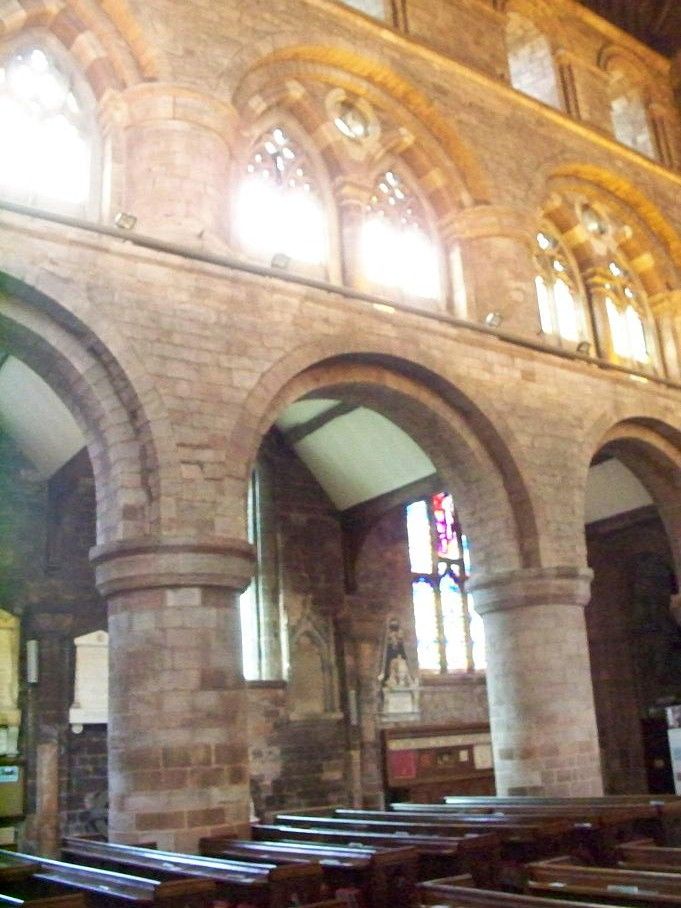
The nineteenth century saw the church greatly restored, as Victorian architects up and down the country were re-evaluating the past and glorifying the medieval gothic style. However, Telford had already struck again, and while building his A5 road from London to Holyhead, a road that passed pretty much through the heart of Shrewsbury, he demolished much of the abbey precinct that had survived to that point, mainly the buildings of the infirmary, so that all that now remains is the abbey church itself, with the refectory pulpit a lone survivor across the road:
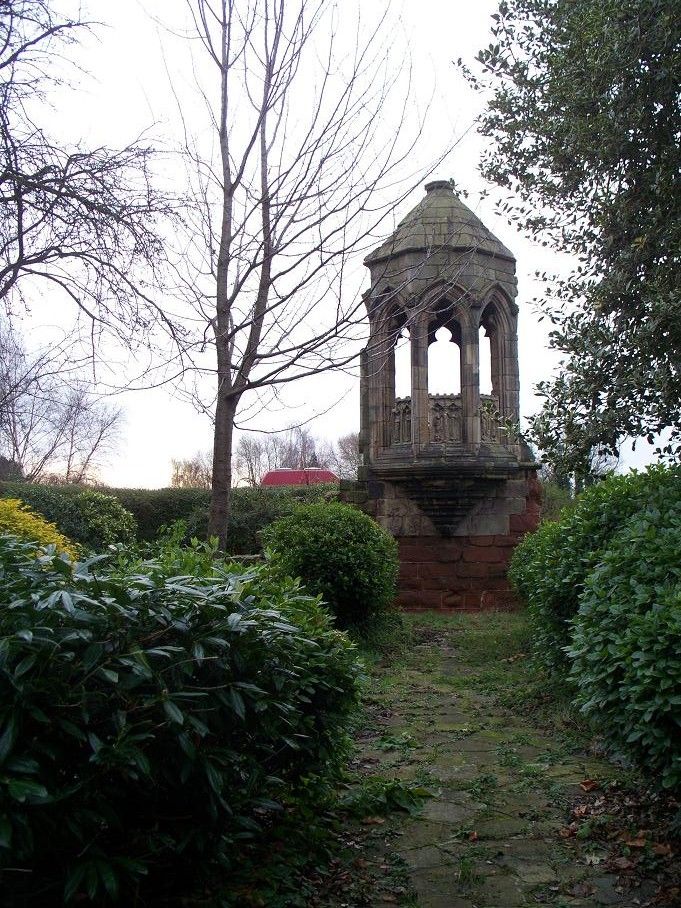

Shrewsbury Abbey was the site of two parliaments during the middle ages, the first of which is very important in history as it decided the fate of Dafydd ap Grufydd, the brother of Llywelyn the Last. I'll discuss Dafydd and the Conquest of Wales in a future blog, as the subject is just too important and damned too exciting to summarize here, but it was at this parliament that the punishment of hanging, drawing and quartering was thought up as a punishment for treason.
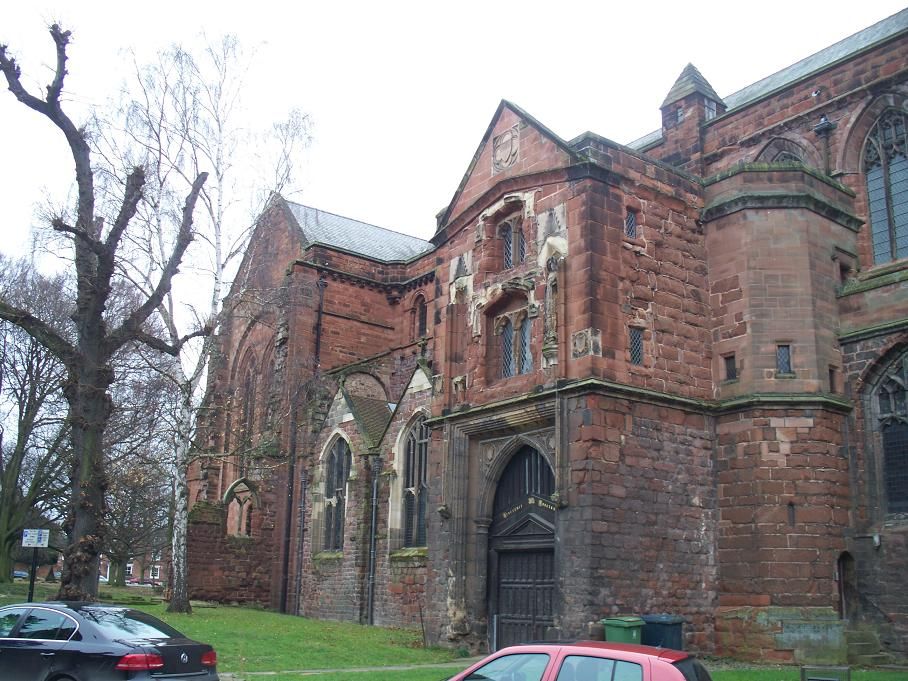
The road continues on over the English Bridge and back into the town centre.
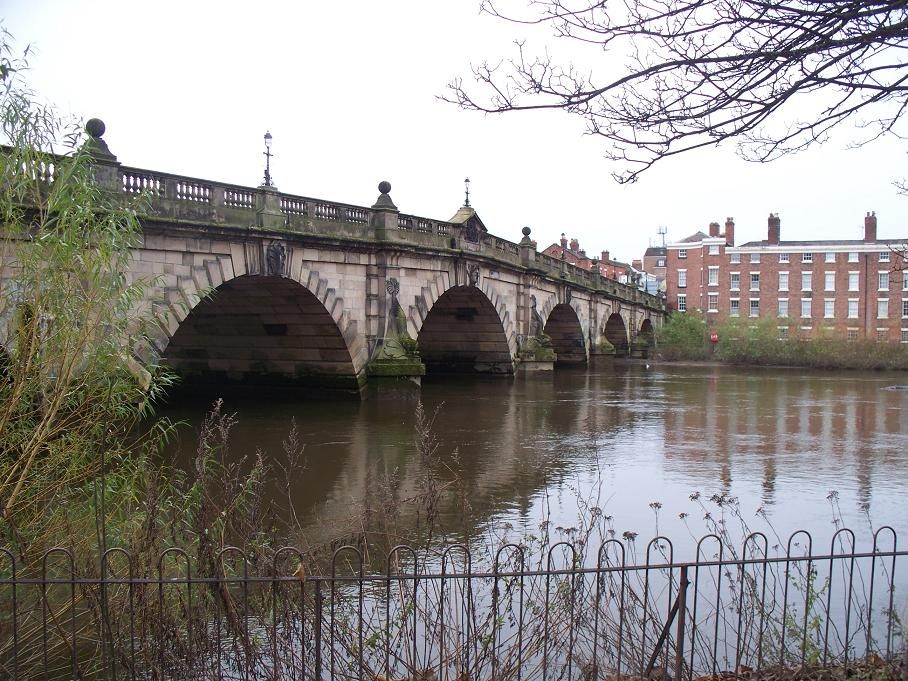
Shrewsbury was defended by the river Severn, but in 1220 a mandate issued by Henry III urged the townsfolk to fortify themselves against the possibility of Welsh raids. Town walls were built during this period, with grants being given to facilitate this. Henry III wasn't entirely without motive of course, as he often visited Shrewsbury during the course of his struggles with the Welsh. The town walls were refortified during the reign of Henry IV, which links in with the 1403 battle just north of the town between the king's forces and Hotspur (where the future Henry V was shot in the cheek as described above). From this period, the lone surviving watchtower of the town dates:
It isn't precisely known when the town walls were removed - a map of 1575 shows the town still encircled, and paintings from the Stuart era show the walls still standing.
The Battle of Shrewsbury, then, was fought between the forces of the crown (led by Prince Hal, later Henry V) and the rebel barons, led primarily by the Percy family of Northumberland. Blackadder fans are right to remember that Lord Percy Percy was heir to the duchy of Northumberland. Anyhow. As you may or may not know, Henry IV usurped the throne from his cousin Richard II in 1399 and faced a fair degree of opposition (if you don't, then panic not for it will be the subject of a forthcoming blog!). However, not all of this opposition was from his actions in overthrowing Richard. Since Edward I's Scottish incursions, the Duchy of Northumberland had been bearing the brunt of most of the Scottish retaliations, and they were annually recompensed by the crown for holding the border. However, the Percy family felt that the new king wasn't holding his end of the bargain. There were many other disagreements too, among them that Sir Henry Percy, known as Hotspur for his readiness to do battle, had been appointed as lieutenant of North Wales but the king was promoting his own son as a military commander in Wales during the Glyndwr Rebellion. (You may be interested to note that Hotspur was the son-in-law of Edmund Mortimer, the third Earl of March). So in July of 1403, Hotspur joined forces with the Earl of Worcester and marched on Shrewsbury, hoping to meet up with his father the Duke of Northumberland's army before fighting the king. However, Prince Henry was waiting for him, and on 21st July they fought a decisive battle just outside the town.
^ the ridge to the left is where Hotspur arrayed his forces.
The site is a bit bland today, nothing more than a field really. Hard to imagine the din of battle, I'm sure you'll agree! Hotspur was cut down and killed when leading a charge against Prince Henry's troops, and the Prince was wounded by an arrow to the cheek as described, and was taken to the abbey to recover. When Hotspur's corpse was brought before him, Henry is said to have wept. Such was the age of chivalry. Upon Hotspur's death, his troops fled the battle, and the Earl of Worcester was executed shortly afterward.
^ Henry V, the famous portrait.
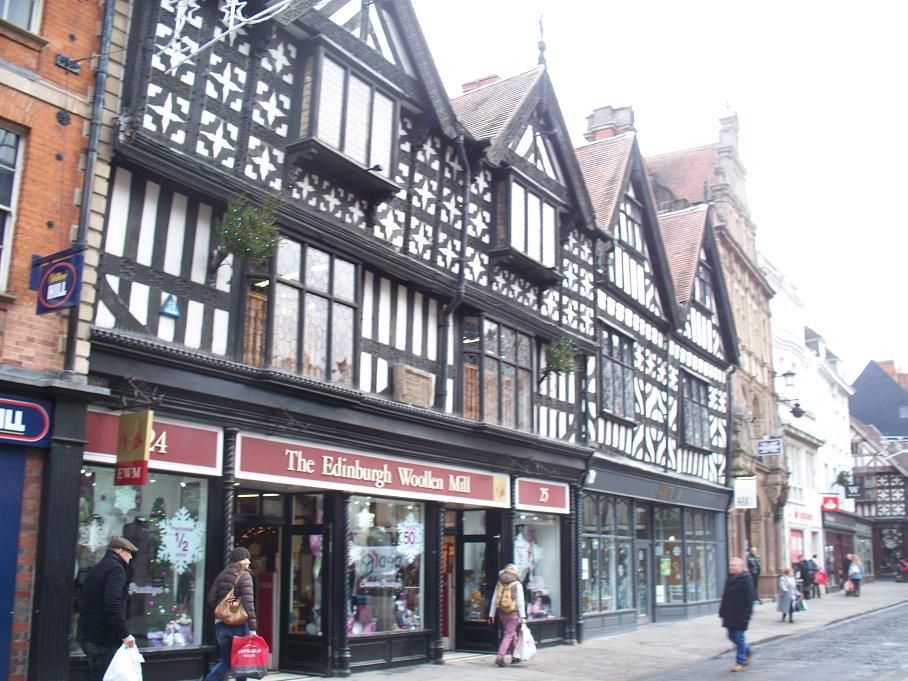
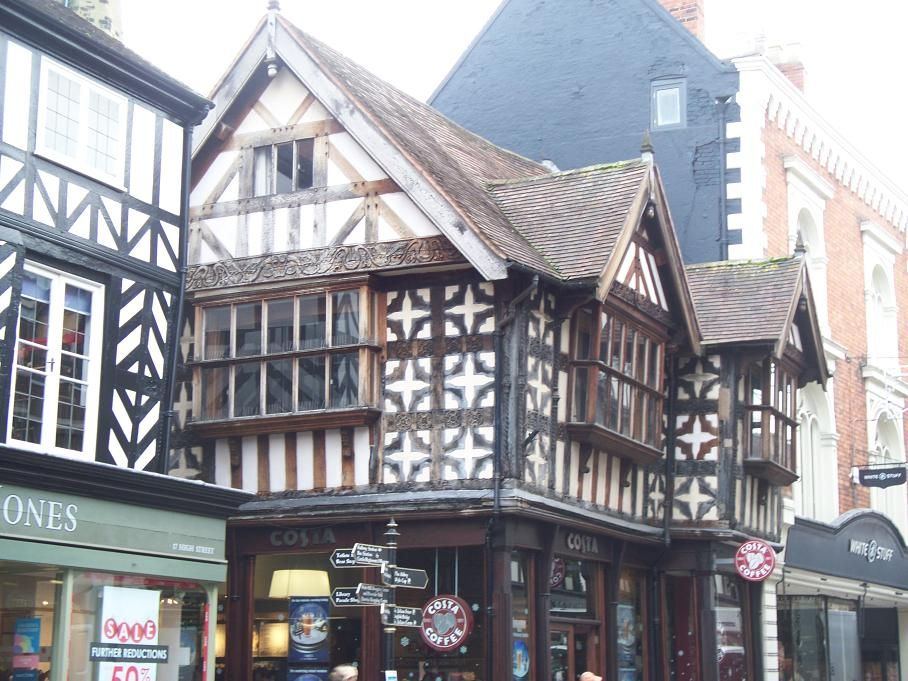
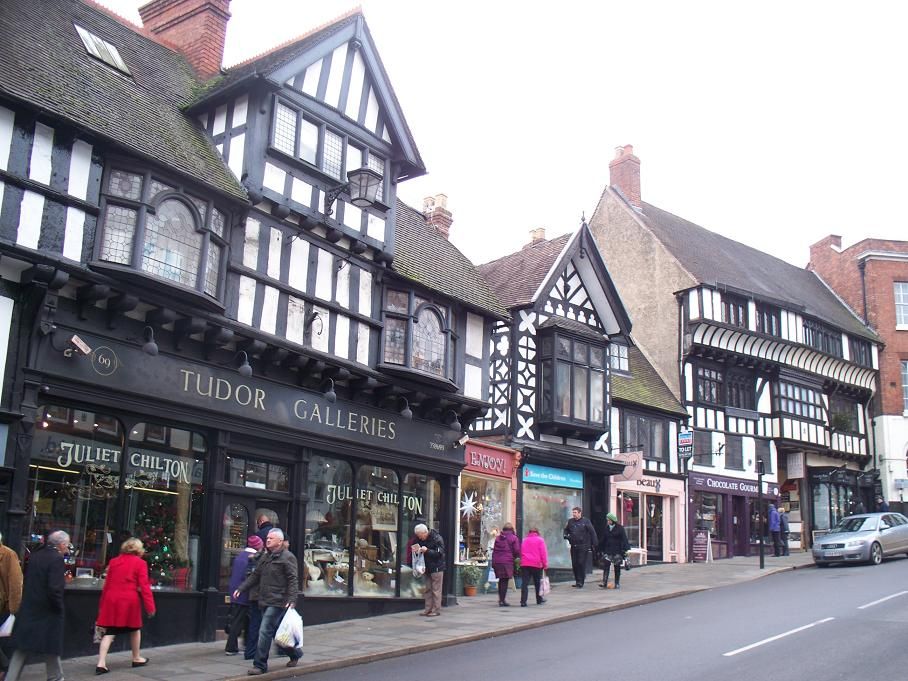
The above shot shows (Henry) Tudor House on the right, where it is said the future Henry VII stayed overnight on his way from Milford Haven to Bosworth Field in 1485.
Shrewsbury became a centre for the wool trade as the middle ages progressed, with wool from the surrounding agrarian area being ferried down the River Severn to Bristol and beyond. The above photo shows Ireland's Mansion, one of the more ostentatious town houses, and home to one Robert Ireland during the Elizabethan era.
The town is also delightfully demonstrative of the organic way medieval towns grew, with many passages and lanes sprouting off the main streets, such as here at the evocatively-named 'Grope Lane':
I'm sure you can imagine just what it was that people were groping down here...
^ Butcher Row. Some magnificent Tudor architecture there!
^ Abbot's House, on Butcher Row. Built in 1459 for the Abbot of Lilleshall Abbey, it is now a designer lingerie shop. Oh my!

Shrewsbury has two famous sons, Charles Darwin (above) and Robert Clive, also known as Clive of India (below)
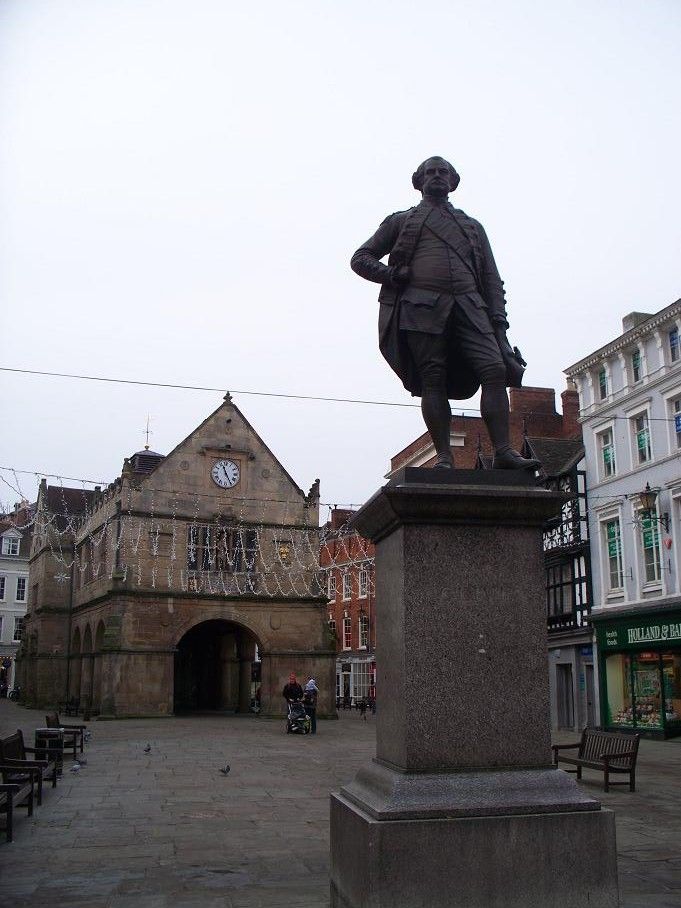
Darwin, of course, needs no introduction, but Clive seems to be a bit of a quiet one today. Actually born nearer Market Drayton, he was MP for Shrewsbury in the 1760s and 1770s, but his fame is primarily that of a soldier. He fought during the First Carnatic War, part of the War of the Austrian Succession (a fascinating subject, but one for another day), and worked his way through the ranks of the East India Company. Through both Clive's diplomacy and militancy, the East India Company secured sovereignty over the subcontinent that led to Disraeli being able to crown Queen Victoria as Empress of India the following century. And if you have ever seen the George C Scott film of Dickens' A Christmas Carol, you'll recognise the building in the background of the above picture, the Old Market Hall...
The Old Market Hall was a dual-purpose building, functioning as a corn exchange at street level, and also as a drapers' hall on the first floor. It was also built in 1596, apparently in the space of four months, and occupies the site of an earlier market hall from the 1260s.

Shrewsbury is a wonderful little town, well worth a visit as one of the great centres of the midlands. There is a lot to offer the medievalist and the shopper! And, as the only other place (aside from London) that I have seen signposted from over 100 miles away, there really is no excuse!
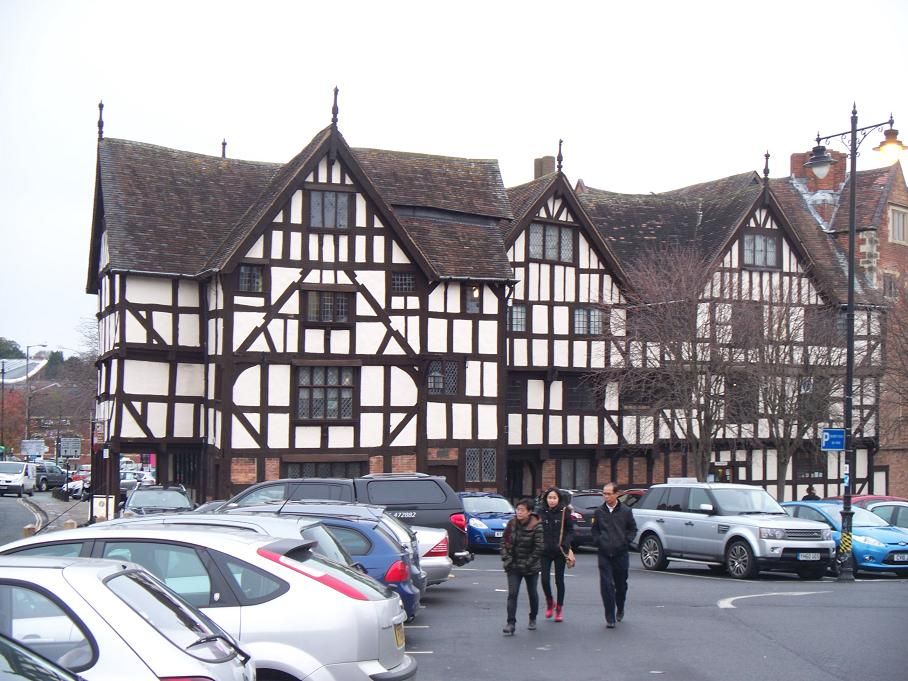
^ Rowley's House, the town house of William Rowley, a Shrewsbury draper, built in 1618.
Shropshire is of course renowned for having more castles than any other English county. In addition to the main castle at Shrewsbury, there are quite a few in the immediate area to the town including, on the way down the A5, Shrawardine.
Built to defend a crossing of the River Severn, it is paired with a smaller motte across the river at Little Shrawardine. The first mention of the castle is around 1165, even though the area is described in Domesday Book, where it is called Saleurdine. Confusingly, when it is mentioned, it is as having been in existence for a while, so it is perhaps an Anglo-Norman building after all.
The castle passed to Henry II in 1171, and there was a lot spent on repairs at this point. Quite why, though, is a mystery. Of course, Henry II's sons rebelled against him which led to some scuffles up and down the country, so perhaps it was in response to this. During Llewelyn the Great's incursions into Powys in the early thirteenth century (the border between England and Wales being fairly flexible at this period) Shrawardine Castle was destroyed in 1215, and once stability had returned with the accession of Henry III, the castle was ordered refortified against further conflict.
The castle passed to the fitzAlans in 1244, with all Crown paraphernalia passing over to Montgomery Castle (see my previous blog for these castles!) The Civil War really brought the end to the castle, though. As with most of the midlands, Shropshire declared for the King, so was the target of some particular brutality, leading to the very fragmentary remains there today.
Not that far away to the south of Shrewsbury, just off the A49 south of the town is Acton Burnell, a quiet little village and home of the Castle of the Burnell family, great friends and supporters of Edward I.
Shropshire is of course renowned for having more castles than any other English county. In addition to the main castle at Shrewsbury, there are quite a few in the immediate area to the town including, on the way down the A5, Shrawardine.
Built to defend a crossing of the River Severn, it is paired with a smaller motte across the river at Little Shrawardine. The first mention of the castle is around 1165, even though the area is described in Domesday Book, where it is called Saleurdine. Confusingly, when it is mentioned, it is as having been in existence for a while, so it is perhaps an Anglo-Norman building after all.
The castle passed to Henry II in 1171, and there was a lot spent on repairs at this point. Quite why, though, is a mystery. Of course, Henry II's sons rebelled against him which led to some scuffles up and down the country, so perhaps it was in response to this. During Llewelyn the Great's incursions into Powys in the early thirteenth century (the border between England and Wales being fairly flexible at this period) Shrawardine Castle was destroyed in 1215, and once stability had returned with the accession of Henry III, the castle was ordered refortified against further conflict.
The castle passed to the fitzAlans in 1244, with all Crown paraphernalia passing over to Montgomery Castle (see my previous blog for these castles!) The Civil War really brought the end to the castle, though. As with most of the midlands, Shropshire declared for the King, so was the target of some particular brutality, leading to the very fragmentary remains there today.
Not that far away to the south of Shrewsbury, just off the A49 south of the town is Acton Burnell, a quiet little village and home of the Castle of the Burnell family, great friends and supporters of Edward I.
The family had held lands here since the 1180s, but really rose to fame when Robert Burnell became a clerk to the then Prince Edward. To reward his service, Edward promoted Robert to Chancellor of England, and Bishop of Bath and Wells (not the baby-eating Bishop, he came later). With the wealth that came with this status, Robert was able to finance the building of his castle, for which he obtained a licence to crenellate in 1284.
However, the castle was abandoned by 1420, and in the eighteenth century Acton Burnell Hall was built nearby, while the castle crumbled into ruin. Aside from the roof that was added to the central tower (as seen in the above photo) when it was converted into a dovecote for the Hall, no further alterations were made, so we get a fascinating glimpse of the medieval fortified manor house.
Acton Burnell should be very famous in English history, however, as the first place in England where a Parliament was held that included the Commons. This took place in 1283, where Edward I convened his nobles and commons to pass into law the Statute of Acton Burnell, which allowed creditors to seize the assets of defaulting debtors. Hardly inspiring stuff, but still! The story goes that the parliament was held in the great barn of the castle buildings, as it was the only place big enough. Today, only one wall remains of this once-important building:
Close to Acton Burnell Castle is Cantlop Bridge, a bridge designed by Telford in 1813 when he was county surveyor in Shropshire. Of the 42 bridges Telford constructed during his tenure here, only seven were made of cast iron, and of those only this one survives.
My thanks to my mum for the photograph of the Acton Burnell barn wall.
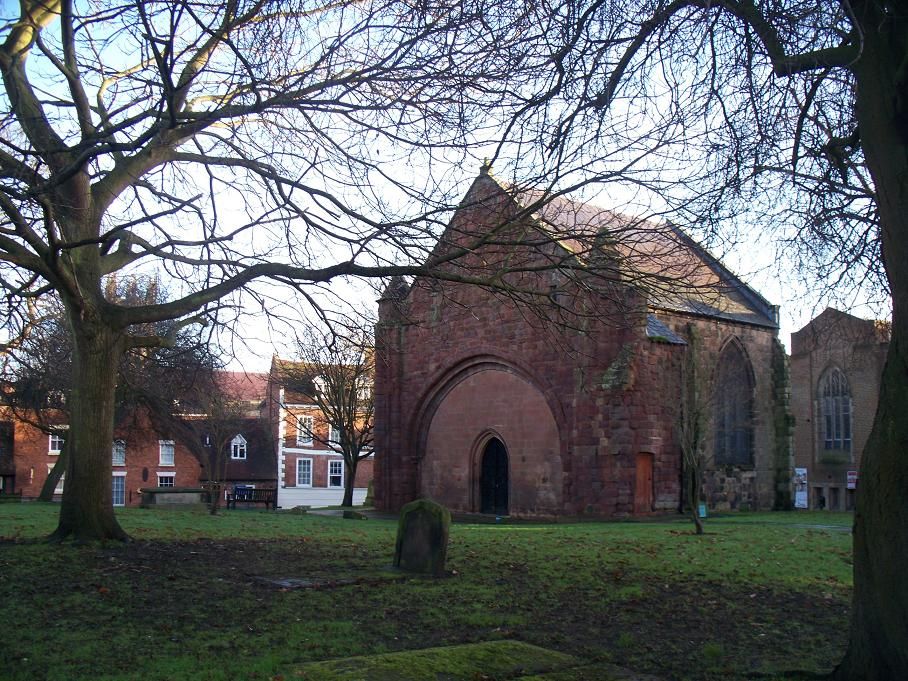
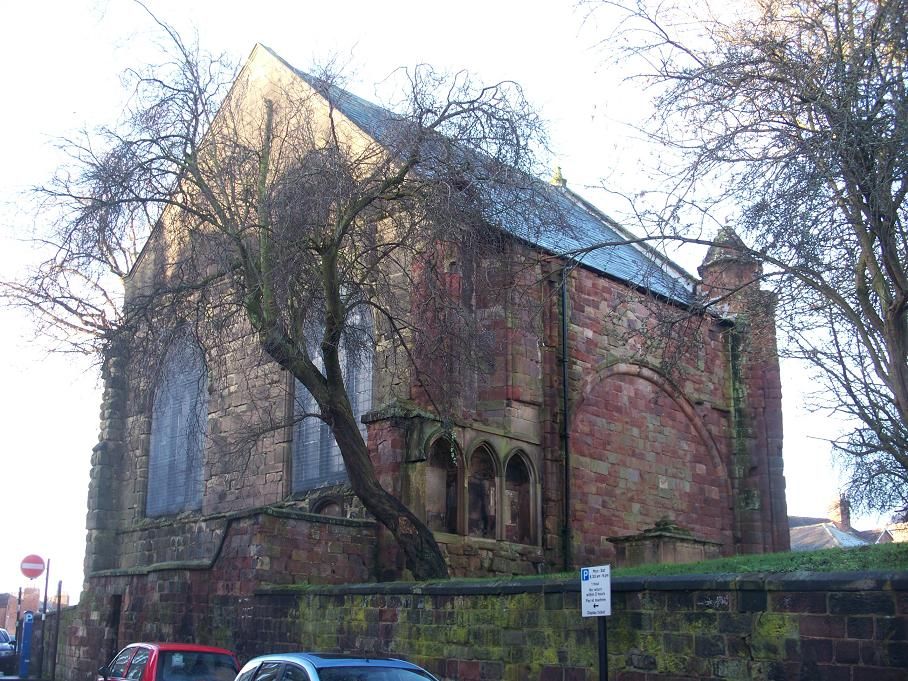

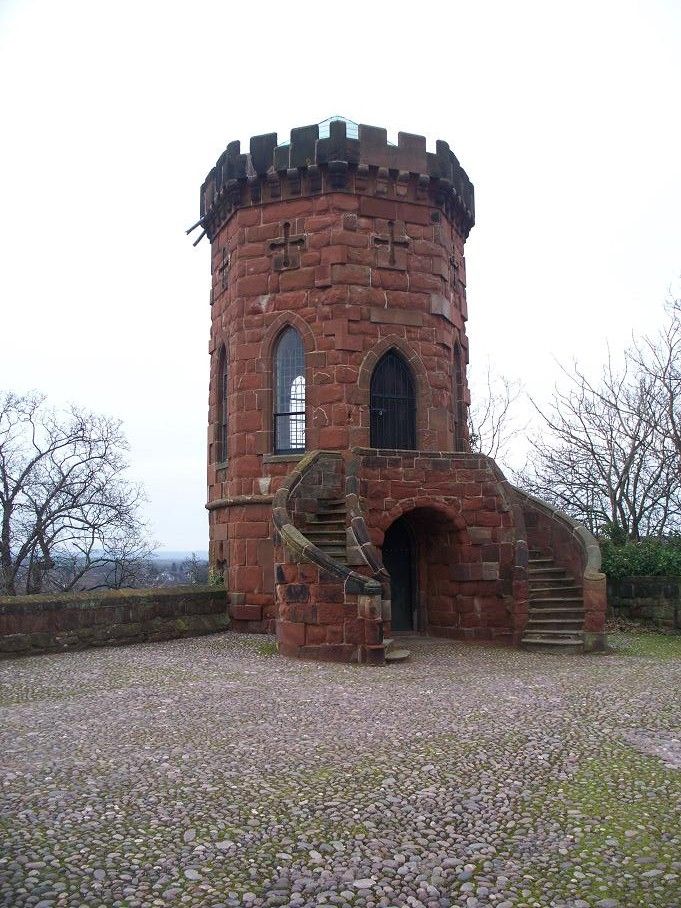

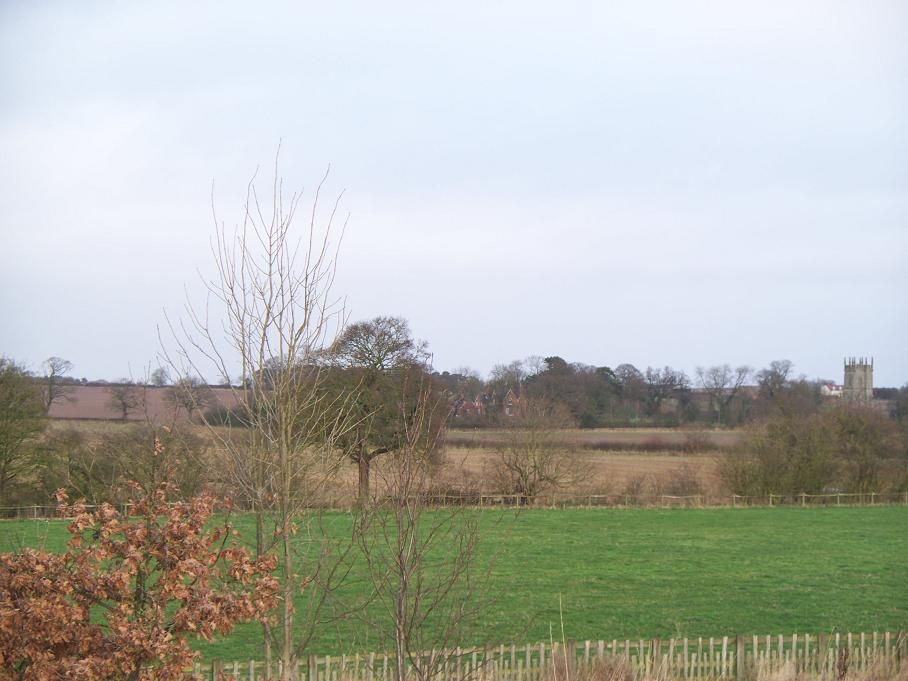
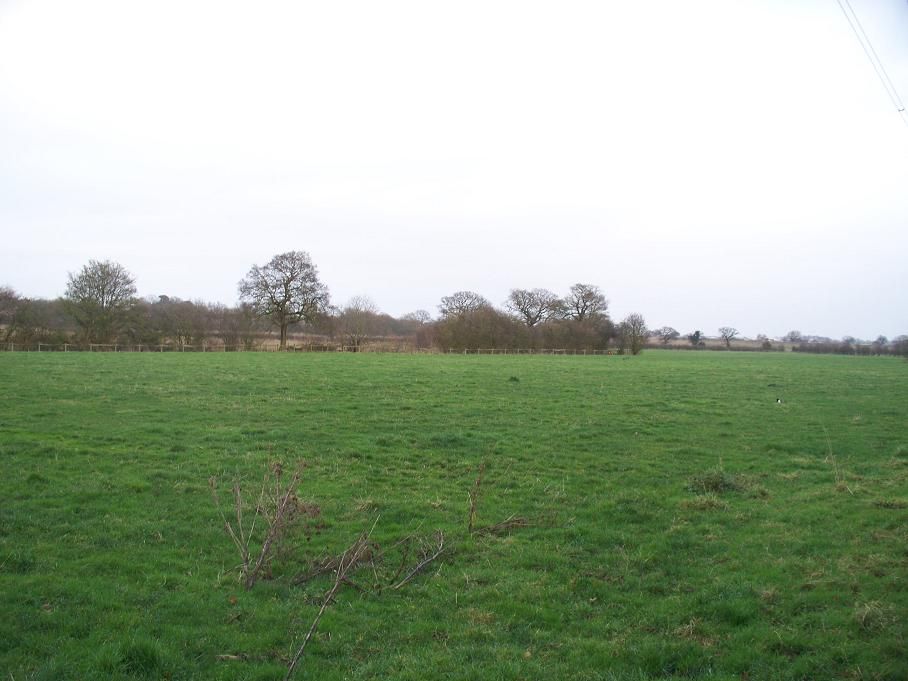
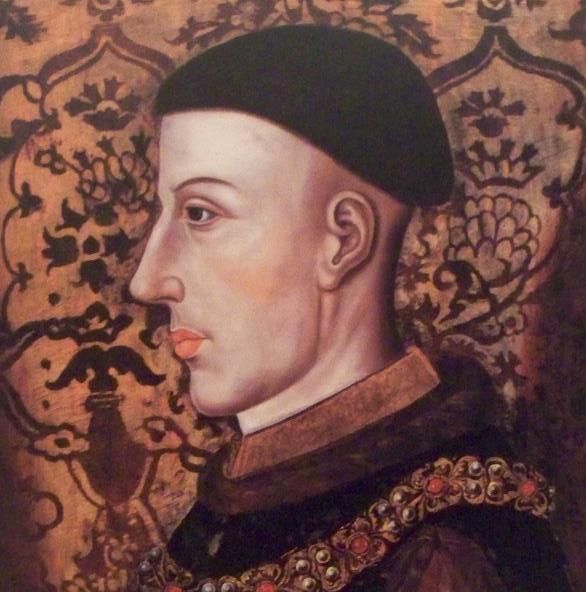
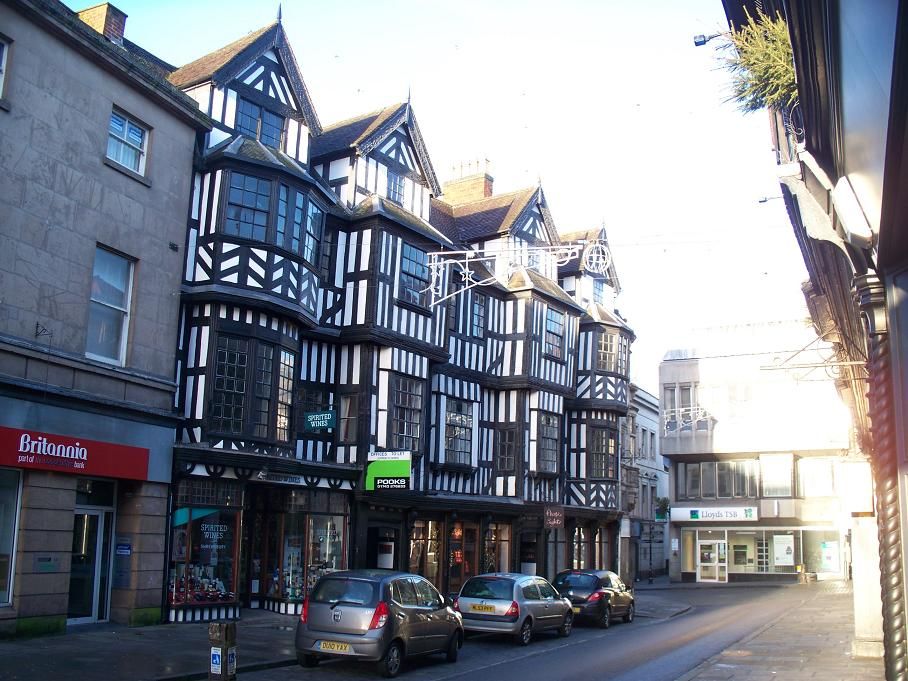
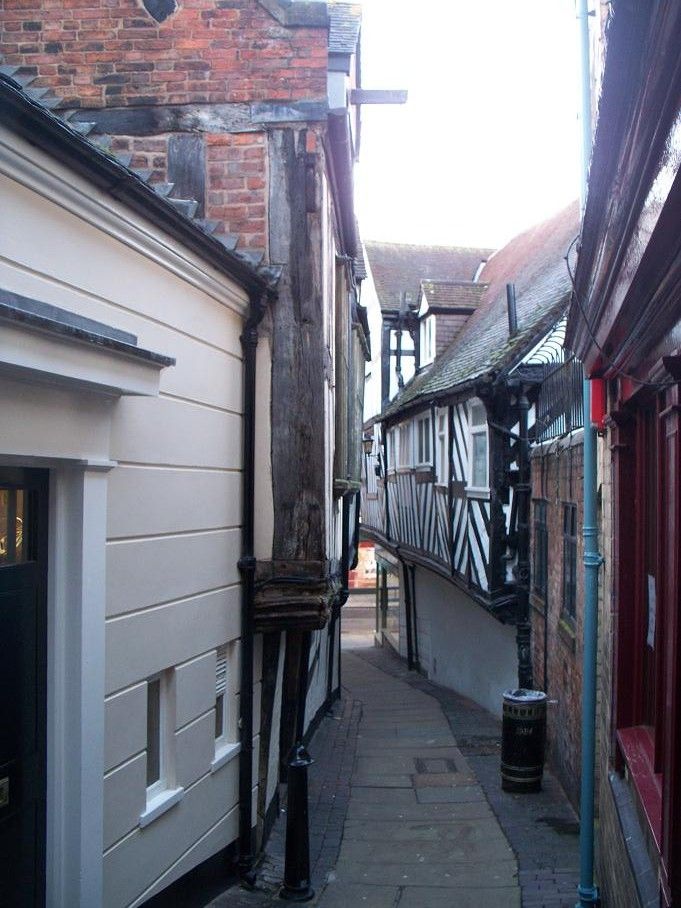
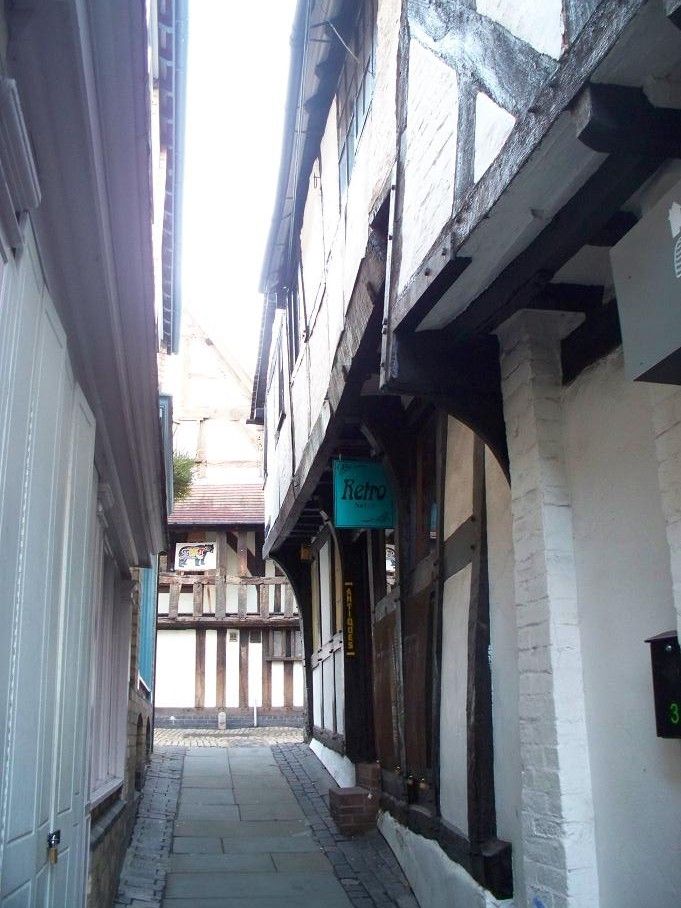
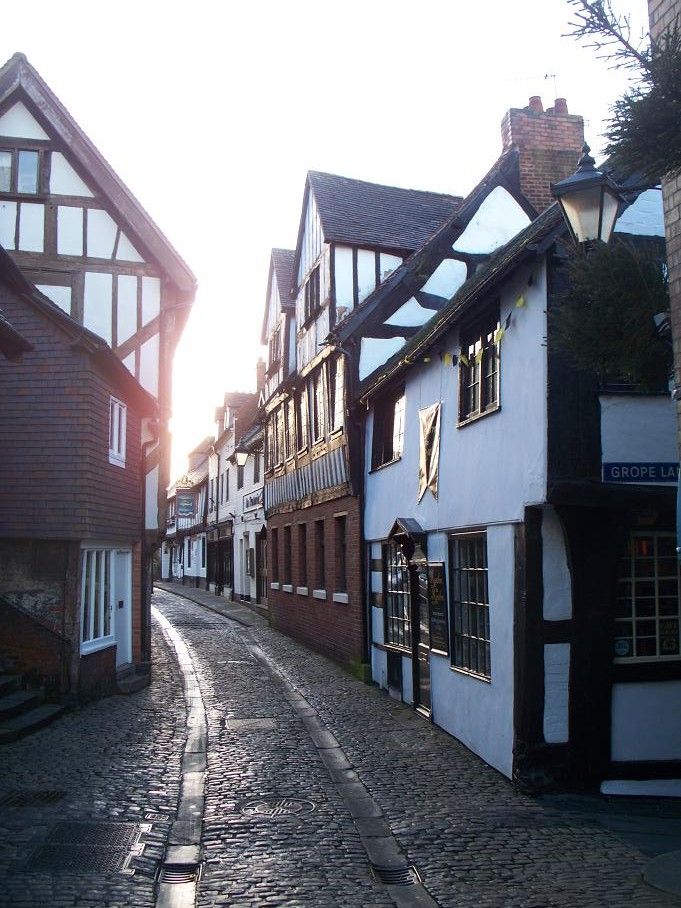
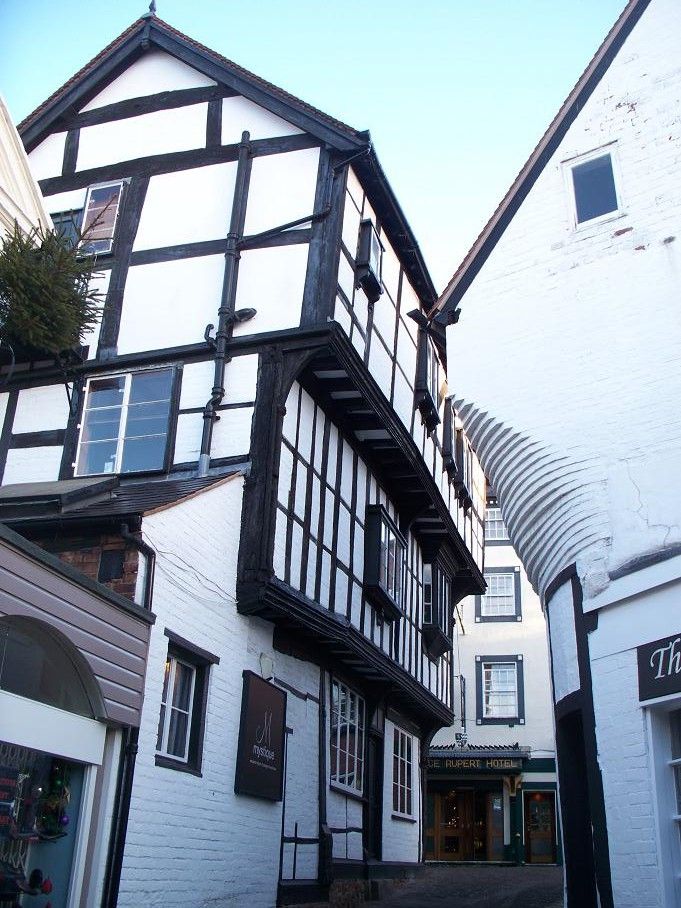


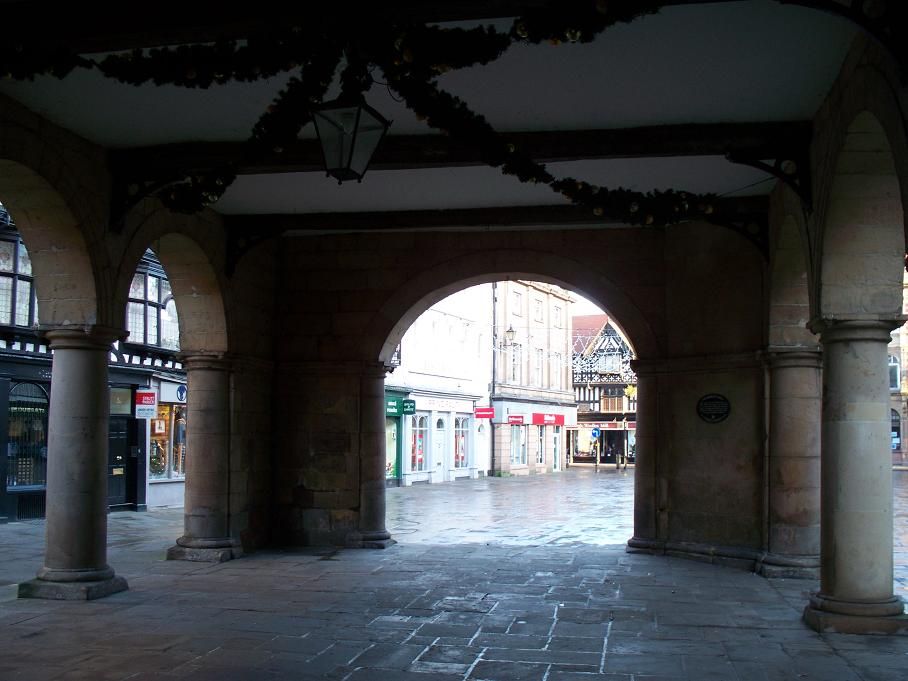



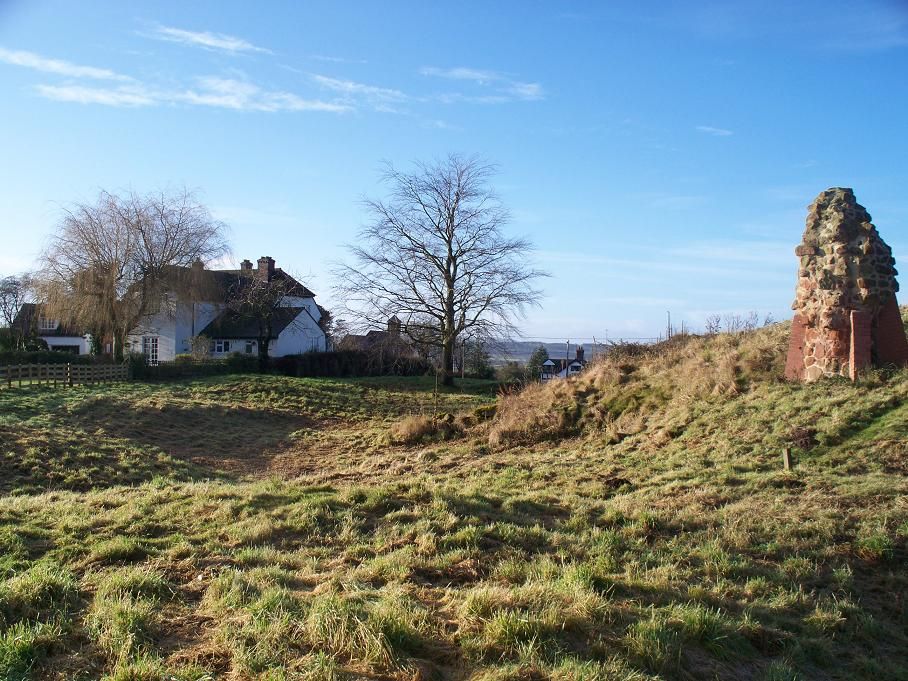
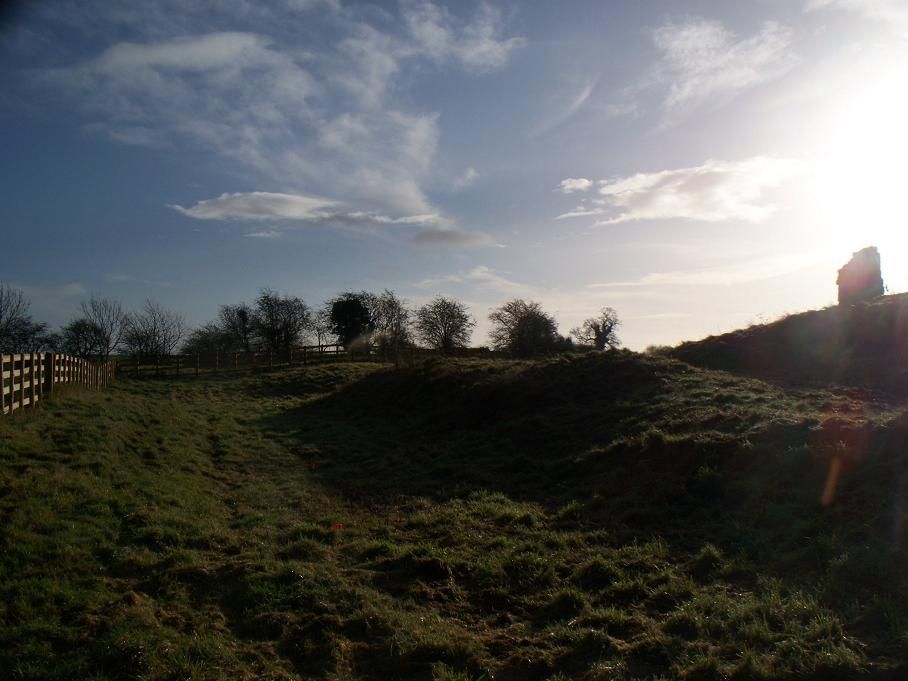

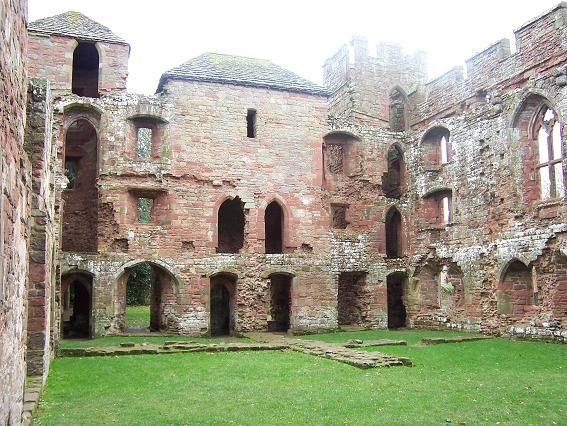




Excellent! A lot of hard work - and research - went into that article. Thoroughly enjoyed reading it.
ReplyDelete